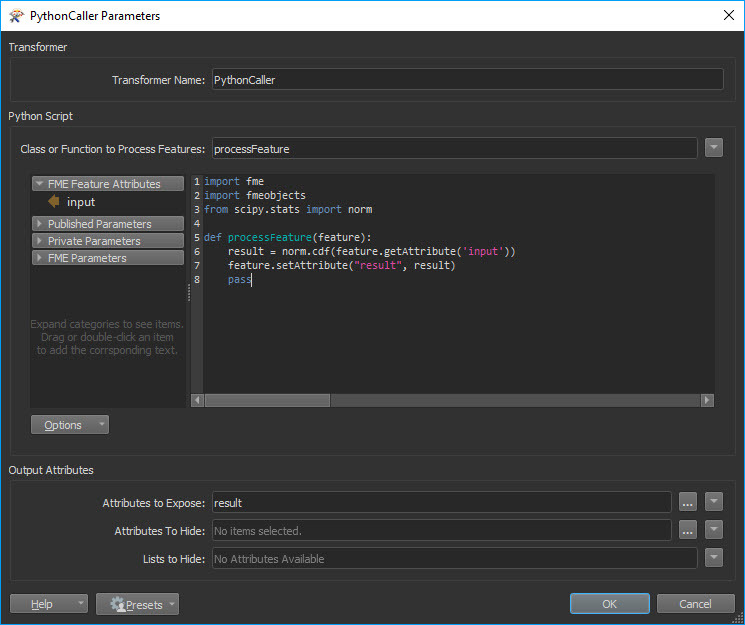I was able to do the calculations using a PythonCaller transformer and the python norm.cdf() function from scipy stats.
I wanted to calculate the Standard Cumulative Normal Distribution (i.e. the Cumulative Normal Distribution with mean = 0 and standard deviation = 1) so I only had to input my value that I wanted the function calculated for. I did not need to specify the mean or the standard deviation.
More info if you need to specify the mean or standard deviation can be found here:
https://stackoverflow.com/questions/809362/how-to-calculate-cumulative-normal-distribution
Here are the details about the workflow -

ExcelReader:
- Pulling from an Excel sheet with sample data in a column called "input"
PythonCaller:

- Left the "Class or Funtion to Process Features" as the default "processFeature" - if you change this you will need to change it on line 5 in the python script below.
- Used norm.cdf() and selected "input" from FME Feature Attributes (to run the calculation my values from the Excel sheet).
- Assigned the calculated value to a new attribute called "result"
- Included "result" in Output Attributes, Attributes to Expose (so that I can use it for further calculations and/or output it).
- Script for the PythonCaller:
import fme
import fmeobjects
from scipy.stats import norm
def processFeature(feature):
result = norm.cdf(feature.getAttribute('input'))
feature.setAttribute("result", result)
pass
Python Compatibility:
- In the Navigator window -> Workspace Parameters -> Scripting ->Python Compatibility; Double click and change to match the python version installed on your computer.
Before I ran the workflow I had to install scipy into this folder (with my username and python version number e.g. python 3.7 would be python37) - C:\Users\<username>\Documents\FME\Plugins\Python\python<major><minor>
More instructions here:
https://docs.safe.com/fme/html/FME_Desktop_Documentation/FME_Workbench/Workbench/Installing-Python-Packages.htm






